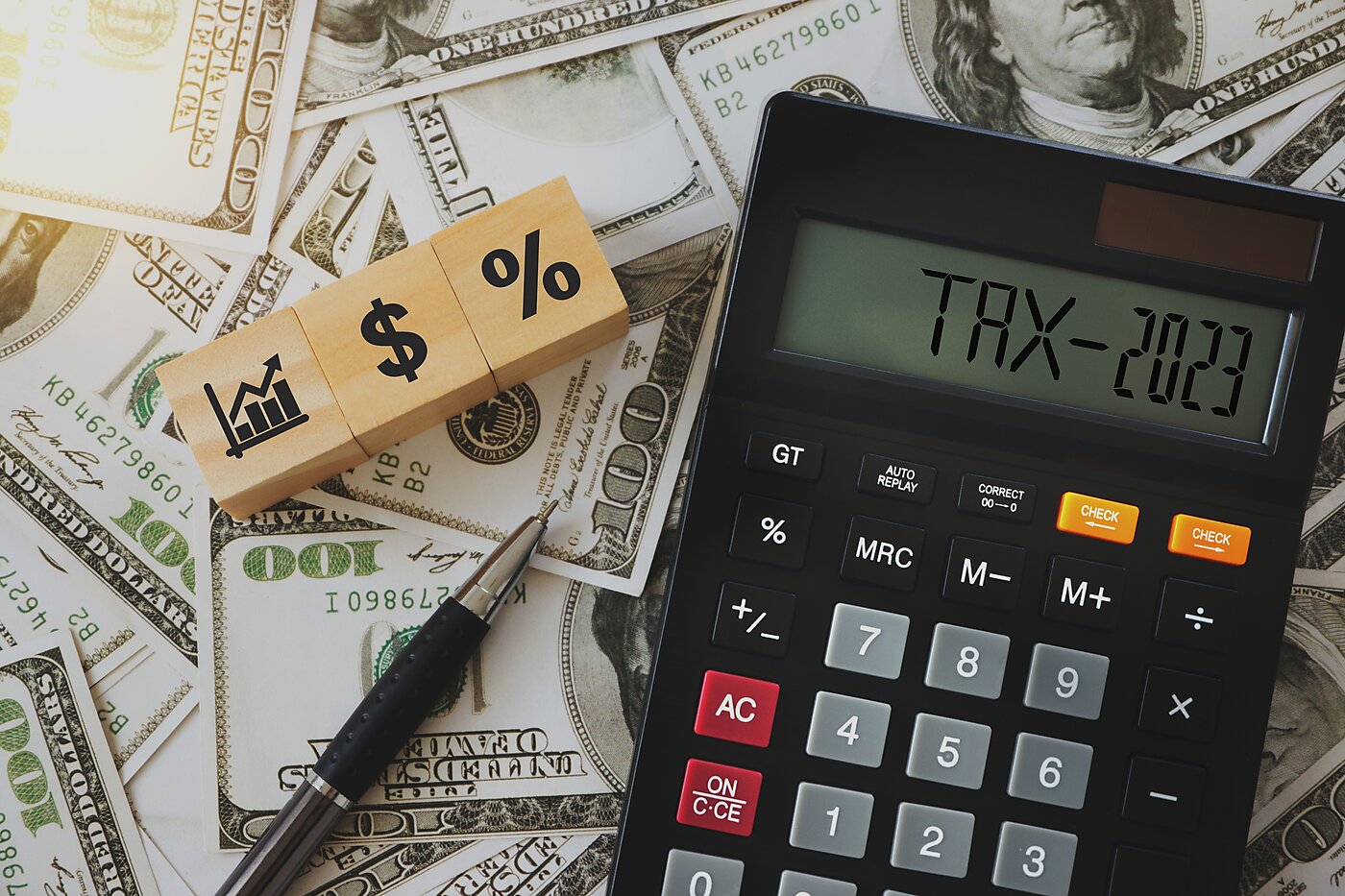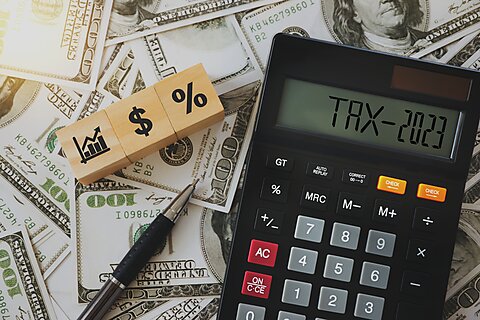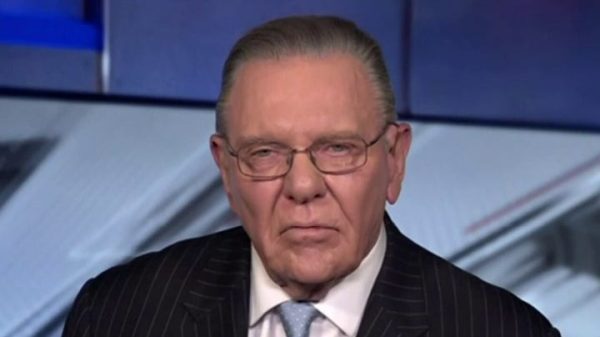
It’s tax season again in America. As we reconcile last year’s tax payment with the Internal Revenue Service (IRS), it is natural to wonder where the $4.4 trillion the federal government collected last year came from and what it funds (or doesn’t).
Newly released data from the IRS show that the federal tax system remains highly progressive and has become more progressive over time. The highest‐income Americans pay a disproportionate share of income taxes and face the highest average tax rates across all federal taxes. Despite high tax rates on some, the United States is a relatively low‐tax country. But with a projected $2 trillion annual gap between revenue and spending over the next decade, it is unlikely to stay that way unless Congress cuts spending.
Most Federal Revenue Comes from Taxes on Income
Americans paid roughly $6.5 trillion in taxes across all levels of government (federal, state, local) in 2023. The federal government collected two‐thirds of that revenue, or $4.4 trillion, in 2023.
Personal income taxes raise 49 percent of the federal government’s tax revenue. However, for all but the top 10 percent of income earners, individual Americans pay more payroll tax on average than income tax each year. Payroll taxes account for 36 percent of federal revenue. Figure 1 shows the remaining revenue comes from corporate income taxes (9 percent) and 5 percent from other sources, including tariffs, excises, taxes on estates, and other fees.
Unlike federal taxes, more than half of state and local tax revenue comes from property and sales taxes. While it varies significantly by state, income taxes often make up less than a quarter of sub‐national revenues.
The Rich Pay the Highest Tax Rates
Data on income tax payments and estimates from the Treasury Department show that the US federal tax system is highly progressive. The top 10 percent of income earners pay more than 60 percent of all federal taxes and 76 percent of income taxes, shares that have been increasing over time.
The US Treasury’s Office of Tax Analysis estimates average federal tax rates, accounting for income, payroll, corporate, and other taxes. Figure 2 shows that tax rates climb as incomes increase.
The lowest‐income 20 percent of earners, measured by adjusted family cash income, face average tax rates that are either negative or close to zero. A negative tax rate means the taxpayer is a net beneficiary of the tax system, likely receiving refundable tax credits, such as the Earned Income Tax Credit (EITC) and Child Tax Credit (CTC).
On the other end of the distribution, the top 10 percent of income earners pay an average tax rate of 27 percent. Treasury breaks the highest income earners into narrower segments, showing that as incomes rise for the wealthy, so do tax rates, even at the very top of the income distribution. The highest earning, 0.1 percent, pays the highest estimated average tax rate of 33.5 percent.
The federal income tax system is even more progressive. The latest Internal Revenue Service data on income taxes for the 2021 tax year show that higher‐income Americans continue to pay a disproportionate share of income taxes and that the system has become more progressive over time.
Figure 3 shows that as a share of adjusted gross income (AGI), the top half of income earners paid 97.7 percent of federal income taxes. The top 1 percent earned 26.3 percent of total income and paid 45.8 percent of all the income taxes. The top 10 percent earned 52.6 percent of the income and paid 75.8 percent of the income tax.
Since 2001, average income tax rates have fallen for all five income groups. Rates have fallen the furthest for those with the lowest income, declining from 4.9 percent in 2001 to 3.3 percent in 2021. For the top 1 percent, average income tax rates fell from 27.6 percent in 2001 to 25.9 percent in 2021. During this same time, the share of income taxes paid by the top 5 percent increased from 52.2 percent to 65.6 percent, while the share paid by all other taxpayers declined. According to the National Taxpayers Union, the top 1 percent’s income tax share is the highest it has been since the 1980s.
Americas Benefit From Relatively Low Taxes
The United States is a low‐tax country compared to similar nations around the world. Low taxes benefit American workers and employers, but without spending reforms, Congress cannot sustain its current fiscal imbalance.
Compared to similar higher‐income countries in the Organisation for Economic Cooperation and Development (OECD), the United States enjoys the fifth lowest taxes (federal and subnational general government revenue) as a percentage of the economy, only undercut by Turkey, Chile, Ireland, and Mexico. America’s lower tax rates have broad economic benefits that foster innovation, higher living standards, and more job opportunities.
On the other end of the spectrum, more than half of the private economy is taxed and spent by many OECD countries, including Norway, Denmark, Finland, France, Greece, and Austria. Such high tax burdens are financed with high taxes on citizens at every income level, not just the wealthy (although they also get soaked).
Looking only at current taxes obscures the fact that the US federal government has run a budget deficit every year since the early 2000s, financing higher spending levels through government debt. Figure 5 shows that spending on interest and other mandatory programs (such as Social Security and health entitlements) will temporarily surpass revenue raised next year, according to the Congressional Budget Office’s (CBO) recent budget outlook. This leaves Congress to finance all other spending with additional debt.
Under current law, the CBO projects interest and mandatory spending will permanently surpass revenues by 2031. If Congress keeps taxes from rising automatically in 2026 when the 2017 tax cuts expire, revenues will permanently fall short of covering mandatory and interest spending, beginning next year.
The current US fiscal trajectory is unsustainable. Eventually, taxes will need to rise, or spending will need to fall. Large, European‐style welfare states cannot be sustainably financed when a small sliver of income earners pay the lion’s share of taxes—big government requires high taxes on the middle class.
Instead of raising taxes, Congress should reduce spending to maintain America’s beneficial outlier status as a country where the government confiscates 15 percent less of your paycheck. However, if the American people continue to demand high levels of government spending, politicians should be clear: big government means higher taxes and slower economic growth for all Americans.





























